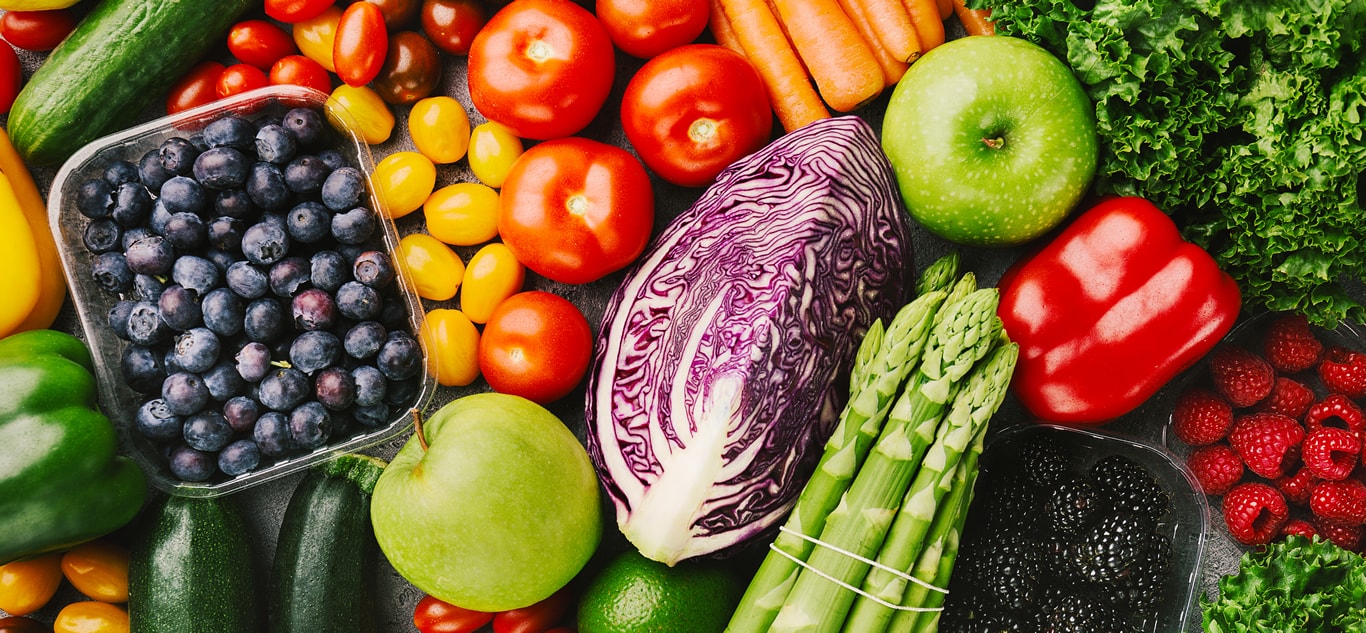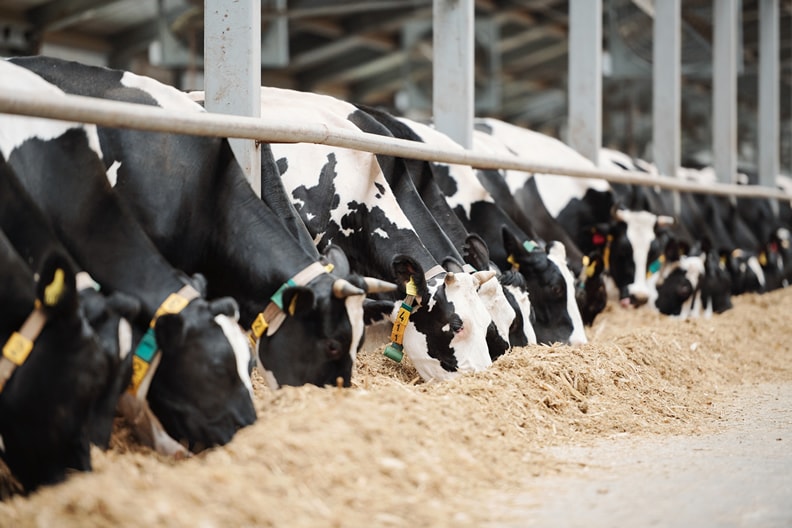
Feed Analysis

| Aerobic Colony Count | ISO 4833-1, ISO 4833-2, 3M Petrifilm Aerobic Count Plates AFNOR 3M 01/01-09/89 |
| Listeria spp. Detection | AFNOR BRD 07/04-09/98 RAPID’L.mono-V11 |
| Listeria monocytogenes Search | TS EN ISO 11290-1, AFNOR BRD 07/04-09/98 RAPID’L.mono-V11 |
| Enterobacteriaceae Detection and Enumeration | ISO 21528-2, 3M Petrifilm Enterobacteriaceae Count Plates AFNOR 3M 01/6-09/97 |
| Coliform Bacteria Count (Colony Counting Technique) | ISO 4832 |
| Salmonella spp. Detection | ISO 6579-1, AFNOR BRD 07/11-12/05 RAPID’Salmonella Agar-V10 |
| Mold and Yeast Count | ISO 21527-1, ISO 21527-2, 3M Petrifilm Rapid Yeast and Mold Count Plates AFNOR 3M 01/13-07/14 |
| Counting of Coagulase Positive Staphylococci (Staphylococcus aureus and Other Species) | TS 6582-3 EN ISO 6888-3 |
| Escherichia coli Count | ISO 7251, TS EN ISO 16654, ISO 16649-2, ISO 16649-3 |
| Bacillus cereus Count | ISO 7932, AFNOR BKR 23/06-02/10 COMPASS Bacillus cereus Agar |
| Clostridium perfringens Count | ISO 7937 |
| Campylobacter spp. Search | ISO 10272-1 |
| Sulfite Reducing Anaerobic Bacteria Count | ISO 15213 |
| Coagulase Positive Staphylococci Count (Staphylococcus aureus and other species) | TS 6582-1 EN ISO 6888-1, 3M Petrifilm Staph Express AFNOR 3M 01/9-04/03 |
| Lactic Acid Bacteria Count | ISO 15214 |
| Enterococcus Count | NMKL 68 |
| Anaerobic Bacteria Count | NMKL 189 |
| Solvent Residue Determination (GC-MS Method) | European Pharmacopeia 5.0.2.2.28 |
| Starch Determination | Commission Regulation (EC) No 152/2009 Annex-III-L |
| Total Sugar Determination | Commission Regulation (EC) No 152/2009 Annex-III-A |
| Total of Dioxin and Dioxin-Like PCBs (WHO PCDD/F/PCB-TEQ) Analysis | EPA 1613 EPA 1668 TS EN 16215 |
| Total Dioxins (WHO PCDD/FTEQ) Analysis | EPA 1613 EPA 1668 TS EN 16215 |
| Sum of Indicator PCBs (PCB28, PCB52, PCB101, PCB138, PCB153 and PCB180 (ICES-6 sum)) Analysis | EPA 1613 EPA 1668 TS EN 16215 |
| Moisture Determination | TS EN ISO 6498, TS 6318, Resmi Gazete 21.07.2017 / 29955 |
| Determination of Insoluble Ash in Hydrochloric Acid | TS ISO 5985 |
| Crude Cellulose Determination | TS 324 |
| Crude Solid and Liquid Fat Determination | TS 6317 |
Roughages used in animal nutrition consist of structural carbohydrates such as cellulose, lignin, hemicellulose and non-structural carbohydrates such as organic acids and sugars. Structural carbohydrates are divided into NDF (Neutral Detergent Fiber), ADF (Acid Detergent Fiber) and ADL (Acid Detergent Lignin).
The structural carbohydrates are named NDF (Neutral Detergent Fiber), ADF (Acid Detergent Fiber) and ADL (Acid Detergent Lignin) because of the neutral detergent and acid detergent solvents used to determine the cellulose fractions.
- NDF (Neutral Detergent Fiber): It consists of hemicellulose, cellulose, lignin, cellulose, cell wall-bound nitrogen and acid-insoluble ash which are insoluble in neutral detergent solution. NDF should be used to increase ruminant productivity and maintain animal health.
- ADF (Acid Detergent Fiber): The amount of ADF in the feed gives information about the quality of the feed. A high amount of ADF in the feed is associated with low digestibility
- ADL (Acid Detergent Lignin): a compound that affects the ability of animals to digest grasses. As plants mature, lignin content increases and digestibility decreases. It is a parameter for determining the lignin content of plants.
The presence of fat in feeds provides many advantages other than the fact that they contain essential fatty acids and provide energy.
Fats are a source of choline, carriers of fat-soluble vitamins, increase the utilization of feeds, facilitate the production of pellet feed, give flavor to feeds and increase their consumption.
You can contact us for "Crude Solid - Liquid Fat Determination" in Feeds.
PCBs can be produced directly or as a by-product of processes such as PVC production, pesticide production or waste incineration. PCBs in feed and feeding them to animals is a situation that must be prevented. PCB analysis is an important parameter to prevent PCBs from reaching humans through animal meat.
You can contact us for "Total Analysis of Indicator Polychlorinated Biphenyls (Pcb) in Feeds".
Feeds consist of water and dry matter. Dry matter consists of organic and inorganic parts. While nutrients such as protein, fat, cellulose, starch, sugar in the feed constitute the organic part; macro elements such as calcium, phosphorus, potassium, sodium, sodium, salt (NaCl) and micro elements such as iron, copper, zinc constitute the inorganic part. Because there may be elements such as soil, sand and dust in the feed. For this reason, the amount of ash obtained is called crude ash.
You can contact us for "Crude Ash Determination" in Feeds.
It is based on the principle that energy is released by the complete combustion of the feed in the bomb calorimeter and this energy is measured as heat. The heat of combustion obtained is indicated as the total energy content of the feed.
The energy value of feeds can be determined by calorimetry, as well as by using the values obtained as a result of chemical analysis of the feed.
"Calculation of Metabolic Energy Value" analysis; we perform in poultry and ruminant feeds.
You can contact us for "Calculation of Metabolic Energy Value" in Feeds.
Environmental pollution, technological processes, packaging materials are factors that cause contamination in food production and pose a risk to human health. Environmental and soil pollution, which occurs directly or indirectly, also causes pollution of feed resources.
Especially Aluminum (Al), Antimony (Sb), Arsenic (As), Copper (Cu), Barium (Ba), Beryllium (Be), Boron (B), Mercury (Hg), Zinc (Zn), Iron (Fe), Phosphorus (P), Gallium (Ga), Silver (Ag), Cadmium (Cd), Tin (Sn), Calcium (Ca), Cobalt (Co), Chromium (Cr), Lead (Pb), Consumption of elements such as Lithium (Li), Magnesium (Mg), Manganese (Mn), Molybdenum (Mo), Nickel (Ni), Potassium (K), Selenium (Se), Cesium (Cs), Sodium (Na), Tellurium (Te), Vanadium (Vn) in feed is harmful and unacceptable for animal health and development.
"Determination of Metals and Other Elements" process is carried out in feed and feed additives.
You can contact us for "Determination of Metals and Other Elements" in Feeds.
Yemlerde protein tayini, azot miktarının belirlenmesi esasına dayanmaktadır. Azot miktarı ile belirlenen protein miktarına “ham protein miktarı” denir.
Not all of the nitrogen in the feed is bound as protein. In addition to the nitrogen in the structure of proteins; Amides, Free amino acids, Glycosides, Alkaloids and Ammonium salts also contain nitrogen. Therefore, the amount of protein determined is the amount of crude protein.
You can contact us for "Protein Determination" in Feeds.
Determination of sugar in feed is a method based on utilizing the reducing property of carbohydrates. All monosaccharides are reducing. Likewise, disaccharides can show reducing properties.
Starch, which is one of the main energy sources of animals, is easily digestible carbohydrates together with sugars in feeds.
You can contact us for "Determination of Sugar and Starch" in Feeds.
Mycotoxins are types of metabolism produced by molds that have toxic effects on humans and animals. The structures of most of these metabolism types are not fully known. However, some biologically active species may also show fatal effects on living organisms depending on the doses taken and personal resistance.
Mycotoxins Analyzed in Feeds
- Ochratoxin A
- Deoxynivalenol
- Zearalenon
- Fumonisin
- Aflotoxin
You can contact us for "Mycotoxin Determination" in Feeds.